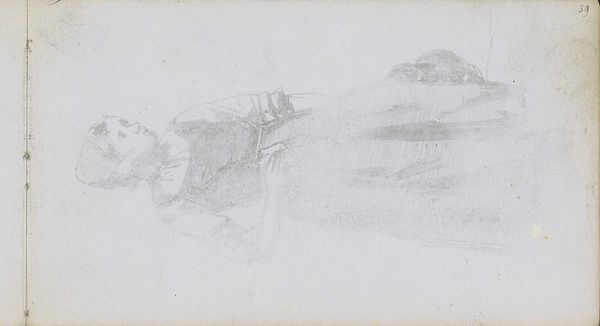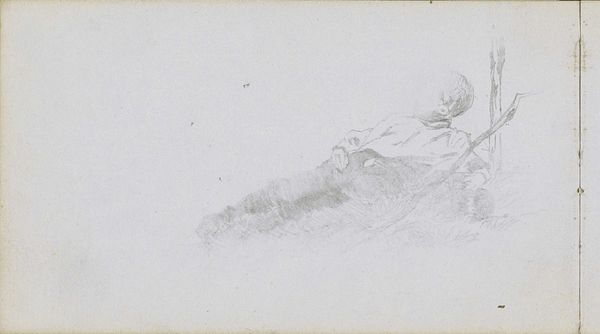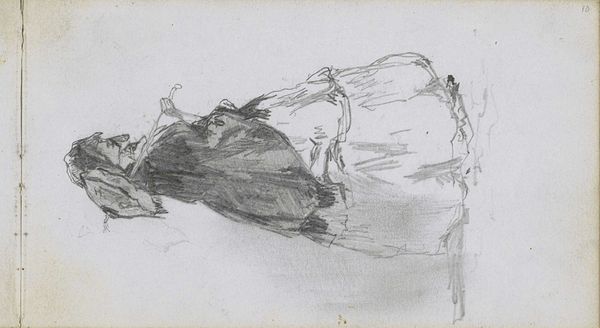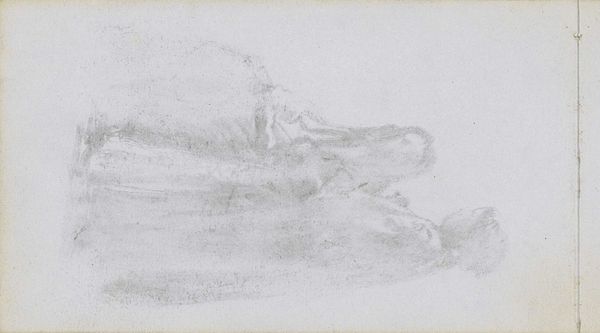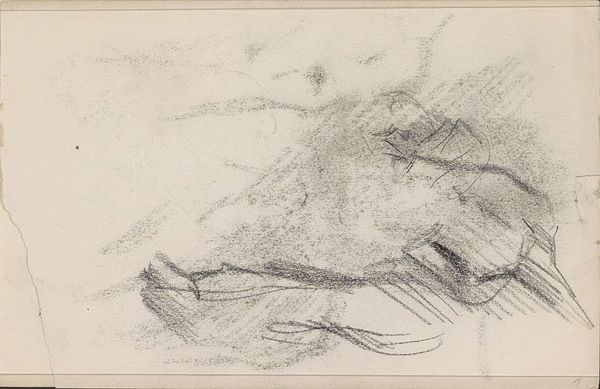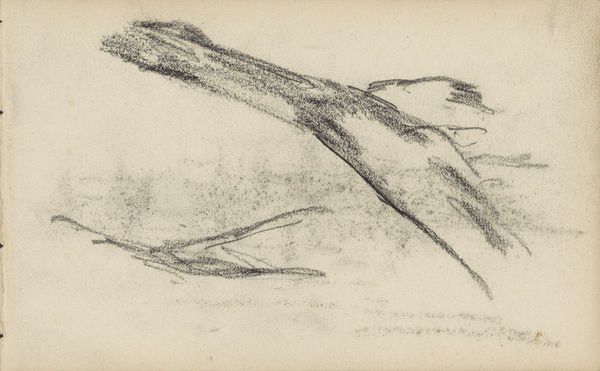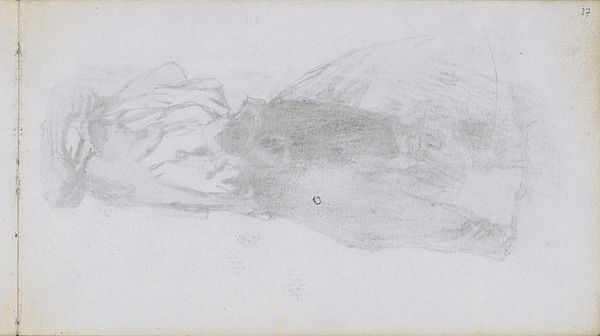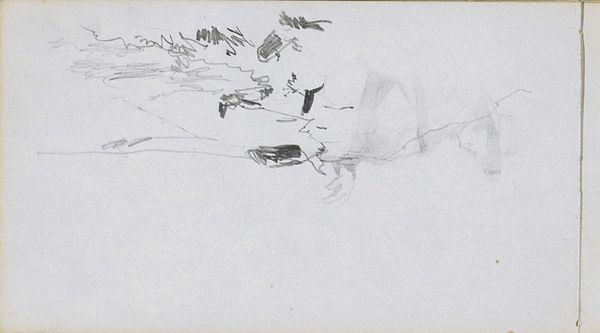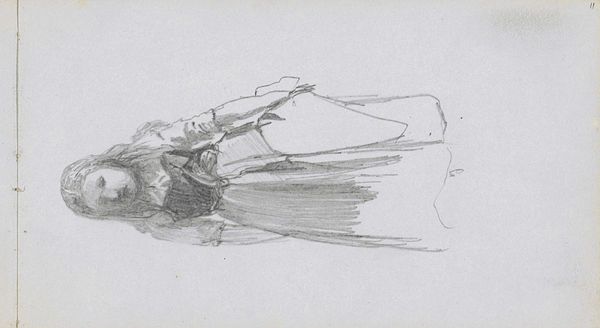
drawing, pencil, graphite
#
pencil drawn
#
drawing
#
amateur sketch
#
light pencil work
#
pencil sketch
#
incomplete sketchy
#
landscape
#
personal sketchbook
#
pencil drawing
#
pencil
#
graphite
#
sketchbook drawing
#
pencil work
#
sketchbook art
#
realism
Copyright: Rijks Museum: Open Domain
Editor: Here we have Johan Hendrik Weissenbruch’s "Abklatsch van de tekening op pagina 10 recto," a pencil drawing from between 1834 and 1903. It has this wonderfully ephemeral quality, almost dreamlike, yet also quite grounded with that heavier shading. What can you tell me about it? Curator: Well, let's consider the context. Weissenbruch was working during a time of great social and political upheaval in Europe. Landscape art wasn’t merely about depicting scenery; it was often about asserting national identity, especially after the Napoleonic wars. Editor: So, are you suggesting that this unassuming sketch might be part of that larger artistic movement? Curator: It’s hard to say definitively with just a sketch, but it is important to remember the institutional framework. Consider where it's housed, the Rijksmuseum. The decision to preserve and display even preliminary works shapes how we see Weissenbruch's contribution to a national artistic identity. What do you notice about the composition? Editor: It's incomplete, quite sparse. The focus seems to be on capturing the essence of… a land formation maybe? There's this interplay between the very light and dark pencil work. It almost feels like he was trying to quickly record an impression, like a memory fading into something solid. Curator: Precisely. And think about sketchbooks themselves. They were often private spaces for artists, yet here it is, being presented publicly. The "personal sketchbook" aspect highlights the museum's power in constructing a narrative around artistic genius. It elevates a casual sketch into a work worthy of study. Editor: So, even a quick study like this gets caught up in the bigger story of art history, and even the museum's role in crafting that history. I never thought of it quite like that! Curator: Exactly. These seemingly minor works often reveal fascinating insights into how art institutions shape cultural narratives.
Comments
No comments
Be the first to comment and join the conversation on the ultimate creative platform.
